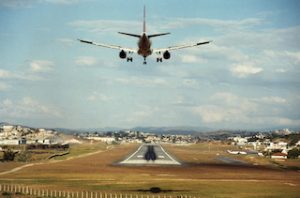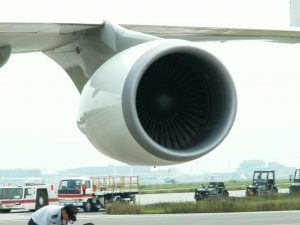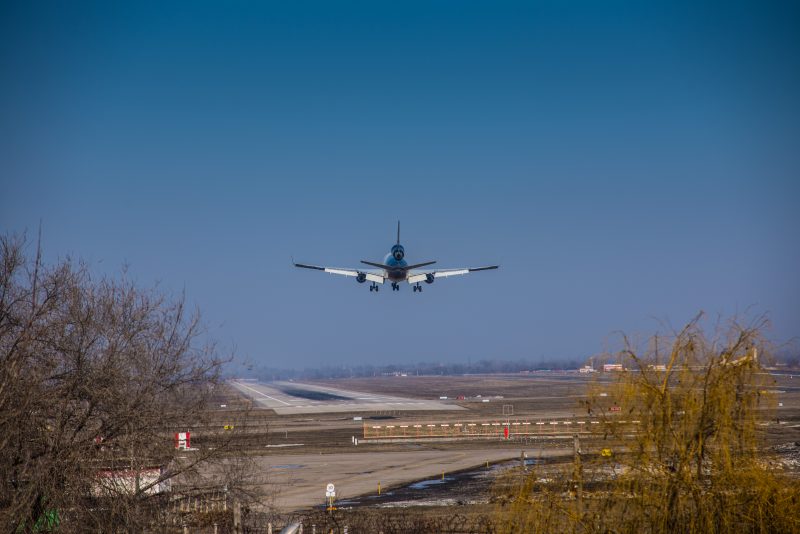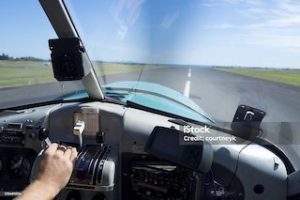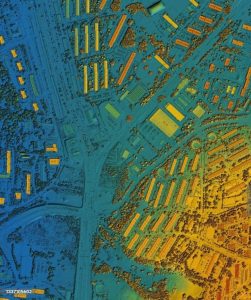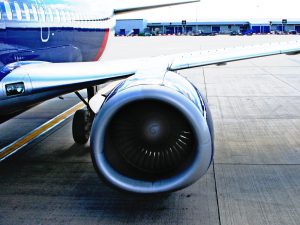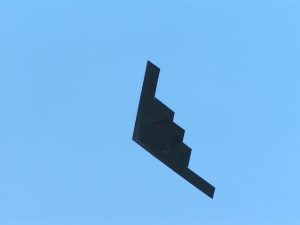10 Best Features Of A Flight Sim
 Flight simulators have become an essential tool for both aviation professionals and enthusiasts. These advanced systems offer a realistic and immersive experience of flying an aircraft, making them invaluable for training, practice, and entertainment. As technology continues to advance, the features of flight simululators have evolved, providing users with increasingly sophisticated and engaging experiences. This article explores the best features of flight simulators, detailing what makes them stand out and how to choose the right one to meet your needs.
Flight simulators have become an essential tool for both aviation professionals and enthusiasts. These advanced systems offer a realistic and immersive experience of flying an aircraft, making them invaluable for training, practice, and entertainment. As technology continues to advance, the features of flight simululators have evolved, providing users with increasingly sophisticated and engaging experiences. This article explores the best features of flight simulators, detailing what makes them stand out and how to choose the right one to meet your needs.
Understanding a flight sim
A flight sim is a software program or hardware system designed to replicate the experience of flying an aircraft. It provides a virtual environment where users can interact with realistic aircraft controls, systems, and external conditions. Flight simulators range from simple desktop applications to complex systems with full-motion platforms and high-definition visuals.
The primary purpose of a flight simulator is to offer a realistic and controlled environment for practicing flying skills, learning about aircraft systems, and experiencing various flight scenarios. Whether used for professional pilot training or personal enjoyment, the quality and features of a flight simulator play a crucial role in the overall experience.
Key Features of a high-quality flight sim
1) Realistic flight dynamics
The most critical feature of a flight simulator is realistic flight dynamics. This refers to the accuracy with which the simulator replicates the handling, performance, and behavior of an aircraft. Realistic flight dynamics are essential for providing an authentic flying experience, allowing users to experience how an aircraft responds to different control inputs and environmental conditions.
A high-quality flight simulator should accurately model the aerodynamics, control systems, and performance characteristics of various aircraft types. This includes factors such as lift, drag, thrust, and weight distribution. Realistic flight dynamics ensure that pilots can practice and refine their skills in a way that closely mirrors real-world flying.
2) Detailed aircraft models
Detailed aircraft models are another crucial feature of a top-notch flight simulator. This includes accurate representations of the aircraft’s cockpit, instrument panel, and avionics systems. Detailed models allow users to familiarize themselves with the controls and systems of different aircraft, enhancing their understanding and proficiency.
A high-quality flight simulator should offer a range of aircraft models, from small general aviation planes to large commercial airliners. Each aircraft model should be meticulously designed to reflect the specific characteristics and functionality of the real-world counterpart. This level of detail is essential for effective training and an immersive flying experience.
3) High-definition visuals
Modern flight simulators utilize high-definition (HD) graphics to create visually stunning and realistic environments. HD visuals enhance the simulation experience by providing detailed and lifelike representations of the outside world, including landscapes, weather conditions, and airport layouts.
High-definition visuals contribute to a more immersive experience, allowing users to navigate through realistic terrain, interact with accurately modeled airports, and experience dynamic weather effects. The quality of the visual environment can significantly impact the overall realism and enjoyment of the simulation.
4) Comprehensive navigation systems
Effective navigation systems are integral to a flight simulator’s functionality. A high-quality flight simulator should include detailed representations of GPS systems, radar, autopilot functions, and communication tools. These systems allow users to practice navigation, flight management, and situational awareness.
Comprehensive navigation systems should support various types of navigation, including VFR (Visual Flight Rules), IFR (Instrument Flight Rules), and RNAV (Area Navigation). The ability to simulate different navigation procedures and techniques is essential for effective training and realistic flying experiences.
5) Advanced motion simulation
Motion simulation technology adds a physical dimension to the flying experience, replicating sensations such as acceleration, turbulence, and g-forces. While full-motion simulators offer the most advanced motion systems, many desktop flight simulators also incorporate motion cues to enhance realism.
Advanced motion simulation technology provides users with a more immersive experience by simulating the physical forces experienced during flight. This feature helps pilots to better acclimate to the sensations of flying, improving their ability to handle real-world scenarios.
6) User-friendly interface
A user-friendly interface is essential for ensuring that both novice and experienced users can easily navigate and operate the flight simulator. The interface should offer intuitive controls, clear displays, and straightforward access to various features and settings.
An effective user interface enhances the overall experience by allowing users to focus on flying rather than struggling with complex controls. Features such as customisable control layouts, adjustable settings, and accessible menus contribute to a more enjoyable and user-friendly experience.
7) Multiplayer and online features
Many modern flight simulators offer multiplayer and online features, allowing users to fly with others in real-time. This capability adds a social dimension to the simulation, enabling users to collaborate, compete, or simply share their flying experiences with a global community.
Multiplayer features can include options for joint flights, air traffic control simulations, and virtual airline operations. These features enhance the enjoyment of the simulation and foster a sense of camaraderie among users. Online communities and forums also provide opportunities for sharing tips, experiences, and insights.
8) Realistic sound effects
Sound effects play a crucial role in creating an immersive flight simulation experience. High-quality flight simulators should include realistic audio representations of aircraft systems, engine sounds, cockpit alerts, and environmental noises.
Realistic sound effects contribute to the overall ambiance of the simulation, providing users with a more authentic and engaging experience. Accurate audio cues can also assist in situational awareness, helping pilots to respond to various scenarios and conditions.
9) Customisation and modding support
Customization and modding support are valuable features for users who want to tailor their flight simulation experience to their preferences. Many flight simulators offer options for customizing aircraft models, scenery, and controls, allowing users to create a personalized flying experience.
Modding support enables users to add new features, aircraft, and scenery created by the community or third-party developers. This flexibility enhances the longevity and versatility of the simulation, providing users with a continually evolving and expanding experience.
10) Training and educational tools
For those using flight simulators for professional training, the inclusion of training and educational tools is essential. These tools can include instructional guides, training scenarios, performance tracking, and feedback systems.
Training and educational tools help users to learn and practice specific skills, monitor their progress, and receive constructive feedback. These features are particularly valuable for pilot training programs, flight schools, and aviation enthusiasts seeking to improve their knowledge and abilities.
Choosing the right flight sim
1) Define your objectives
When selecting a flight simulator, it’s important to define your objectives and needs. Are you looking for a simulator for professional training, recreational flying, or both? Understanding your goals will help you choose a simulator that aligns with your requirements and provides the features you need.
2) Consider your budget
Flight simulators vary widely in price, from affordable desktop versions to high-end systems with full-motion capabilities. Consider your budget and how much you are willing to invest in the simulator. Keep in mind that higher-priced simulators often offer more advanced features and greater realism.
3) Check system requirements
Ensure that your computer or hardware setup meets the system requirements for the flight simulator you are considering. High-quality simulators may require powerful processors, ample memory, and advanced graphics cards. Verify the specifications and ensure compatibility before making a purchase.
4) Research reviews and recommendations
Research and read reviews from other users to gauge the performance and quality of the simulator. Look for recommendations from aviation professionals or enthusiasts to find a simulator that meets your expectations and provides a high-quality experience.
5) Evaluate support and updates
Consider the level of support and updates provided by the simulator developer. Regular updates can enhance the simulator’s functionality and address any issues or bugs. A responsive support team can assist with technical problems and ensure a smooth experience with the simulator.
Flight sim experience
The best features of a flight simulator play a crucial role in determining the quality and effectiveness of the simulation experience. Realistic flight dynamics, detailed aircraft models, high-definition visuals, and advanced motion simulation are just a few of the key features that contribute to an immersive and engaging flying experience.
By understanding these features and considering your specific needs and preferences, you can select a flight simulator that meets your requirements and enhances your training or recreational flying experience. As technology continues to advance, flight simulators will offer even more sophisticated and realistic experiences, further revolutionizing the world of aviation simulation.
Whether you are a pilot, an aviation enthusiast, or someone interested in exploring the world of flight simulation, the right flight simulator can provide endless opportunities for learning, practice, and enjoyment. Embrace the best features of flight simulators and take your flying experience to new heights with cutting-edge technology and innovation.

